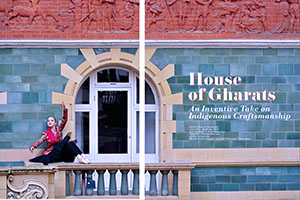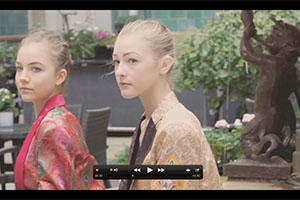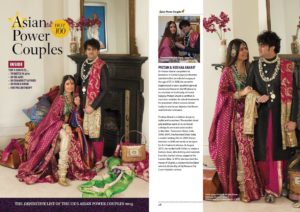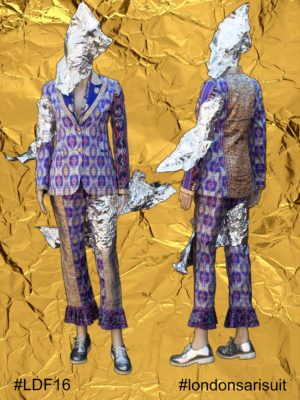
Neishaa Gharat is not an unknown face in the British Indian circle. Her design house ‘House of Gharats’ that features Indian traditional craftsmanship & fabrics, designed with contemporary style, is a part of many boutiques in London and soon to be launched in Paris, Bucharest, Florence and New York. And as her new inititiave, Neishaa is overseeing the upcoming Bengal government’s Biswa Bangla store in London, in either of the key areas like Piccadilly, Covent Garden or Bond Street.
Believed to be inaugurated in spring summer this year, there are now possibilities it may be deferred till after the Bengal elections.
Biswa Bangla, is an umbrella organisation to showcase and promote the heritage products of West Bengal. It is a State Government initiative to revive and preserve the heritage of the State and project the energy and creativity of its people. It is an initiative to assist Bengal’s artisans and weavers to operate autonomously and flourish.
Neishaa, who is half Manglorian and half Gujarati, married to a Marathi doctor, started her designer journey in Mumbai, but it was Kolkata and her love for Kali Ma (Goddess Kali) and Kalighat that changed her life.
“It was 2005 when I was on a soul searching journey and landed in Kolkata for a certain project. I ran my own design house in Mumbai at that point, and I really wanted a quiet weekend away. As it happened, on a spiritual discovery I went to Kalighat for a ‘darshan’ and during the ‘aarti’ I had an out of the world experience. A glow around Ma’s murti and everything silenced around me. I felt a connection with the Goddess- a pull I have never experienced before.
“Eventually I returned to Mumbai, got married and moved to the UK. I sold off my business in India and started from scratch here. But Kolkata and Kalighat have been a part of my identity and my fashion ever since. I feel I have Ma’s blessings”
The journey that began spiritually, soon became her passion. Incorporating Kalighat patachitra (painting) in her dresses and scarves- gave them a unique look- a contemporary edge. “The largest collection of Kalighat patachitra is in Victoria and Albert Museum. The British Raj brought along quite a bit, principally as cheap souvenir.
“Most of them are drawn with natural dyes on paper, backed by cloth.
“I take pride in the skills of the craftsmen as artists- one should not pity them for their poverty and background. Fashion evolves, crafts too. Think of shola (sholapith). We could easily use it to make a hat for the Royal Ascot or dokra could be used to make contemporary jewellery and tableware accessories. Key design interventions could make traditional skills relevant to create products for the International market.”

In September 2015 autumn, during London Design festival 2015, Neishaa showcased arts, crafts and fabrics of Bengal in collaboration with Biswa Bangla. These included revival products like Kantha, Jamdani, Patachitra, Masks, Balaposh quilts & Indo- Portugese shawl. Other Biswa Bangla products also included fragrances and tableware. Live demonstrations from artisans included a Shola mask maker, a Kantha embroiderer, a Muslin weaver and a Patachitra artist. Experiences & interactions both with the products and artisans generated a keen interest in the arts and crafts of Bengal and the products.
The key objective for the Bengal government to open this store in UK is to showcase traditional products and crafts along with international and contemporary facets of the same.
Speaking about her consultancy role with Biswa Bangla, Neishaa said, “My work with Biswa Bangla started when West Bengal’s Chief Minister Mamata Banerjee visited the UK last year July. Ms Banerjee wants to put Bengal in the world tourism map. And why not? UNESCO welcomed the Rural Craft Hub of Bengal at a special event in Paris, last July. And it is a well deserved recognition.
“For example, during the design festival in September, we launched Balaposh, an exquisite light weight, handcrafted, scented shawl or quilt, traditionally used by the nawabs of Bengal. To educate visitors, we showed a film that was shot by Vineett Vohra in collaboration with me. The only practitioner of this almost extinct art form, Sakhawat Hussain Khan of Murshidabad, featured in this video installation that presented a visual story of how balaposh is made, which was projected over a piece of balaposh.”
“My aim is to take this further,” added Neishaa. “Lots of young British designers could create products out of what the craftsmen have produced, and give them a contemporary edge. It’s hugely ambitious and it’s challenging for the western taste at the same time. But the potential is huge.
“After the success of London Design Festival a range of UK wide events are planned to promote and showcase the artisans and craftspeople. London Craft Week, Art in Action – Oxford, screening of the Balaposh film documentary at festivals and cultural centres etc are some of them.”
Coming to power in 2011, Bengal Chief Minister Mamata Banerjee has lived up to one of her election promises – that of developing micro, small and medium enterprises and Biswa Bangla is an initiative to promote the state’s dying arts and crafts.
After establishing her brainchild in West Bengal and the country, the store is now being launched abroad- in London and also believed to be in China. Mr. Rajiva Sinha, Principal Secretary, Micro, Small & Medium Enterprises and Textiles, Government of West Bengal, India is doing his utmost to get everything up and running. With seven operational stores, the venture already has a turnover of £1.5mn (Rs 15 crores) in the first year. Over the next two years, revenue is expected to increase six-fold to about £10mn (Rs 100 crore). Some Indian states have evinced interest in the business model of Biswa Bangla and are looking at adopting it. The Rajasthan government has reportedly sent a team from consultancy firm EY to Kolkata to study Biswa Bangla’s operations. The principal secretary of Uttar Pradesh’s Khadi & Village Industries has apparently also visited Kolkata to see the model and the Odisha government has made some preliminary enquiries.
===============
Among the arts being revived at Biswa Bangla are:
– Indo-Portuguese shawls – each of which takes about six months to embroider
– Muslin: They are aimed at reviving the fabric and supporting the 800 remaining weavers in the country.
– Darjeeling tea
– Masks
– Attar perfumes
– Kalimpong cheese
– Mustard sauce and honey from the Sunderbans.
Biswa Bangla has more than 5,000 products, including a collection of 24 kinds of dolls from various parts of the state. The range is also being expanded with the addition of Bonoloukhi ghee from Shantiniketan and other products that have heritage value.
Other products revived is -Carmichael Rumal, a handkerchief made of Murshidabad silk. Thomas Gibson Carmichael, who was governor of Bengal between 1912 and 1917, is said to have been so impressed by these handkerchiefs that he started exporting them.
=====================




